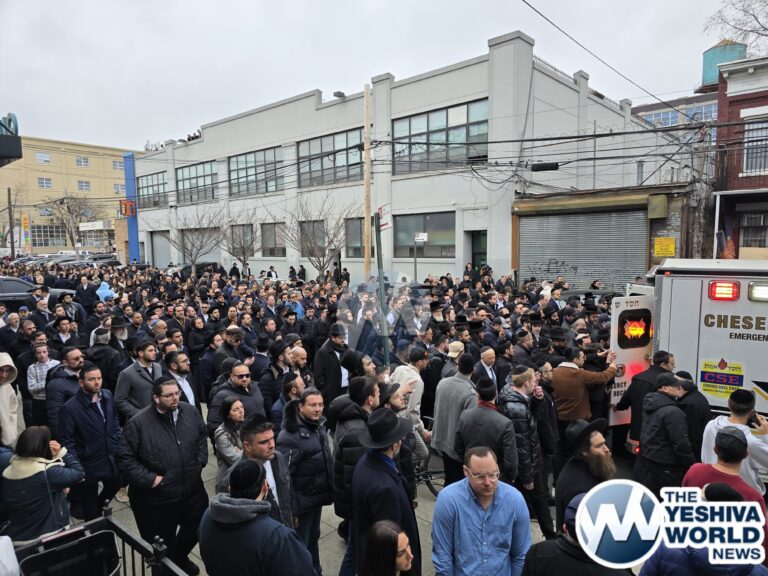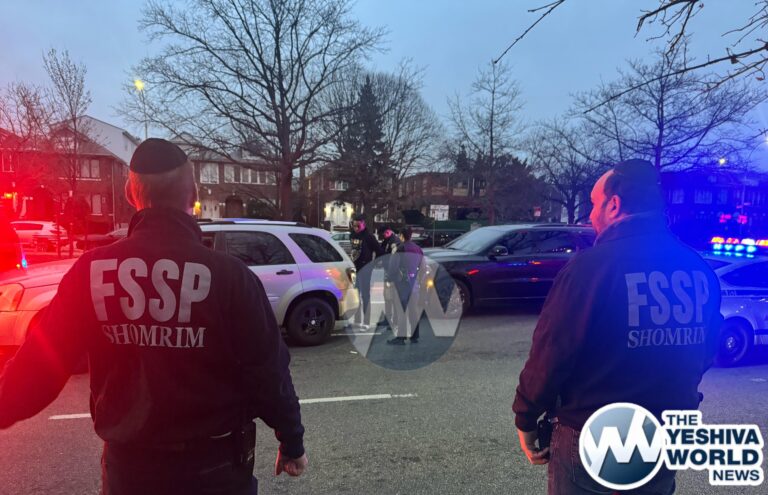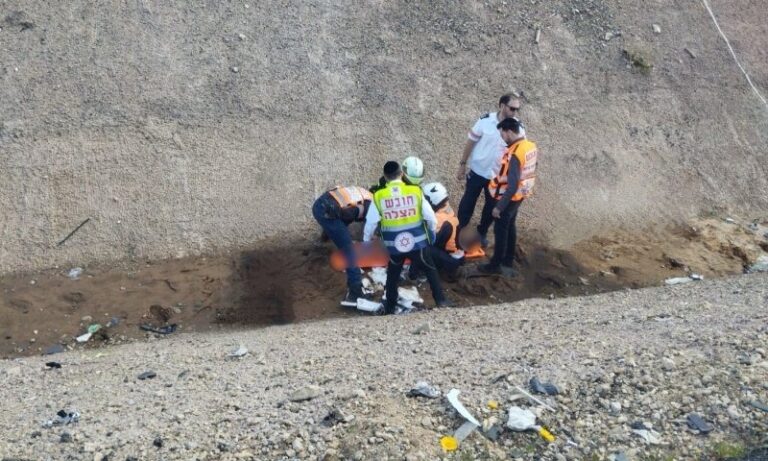 Governor Andrew M. Cuomo today declared a state of emergency for the following counties ahead of the extreme winter storm expected to bring heavy snowfall and high winds: Bronx, Dutchess, Kings, Nassau, New York, Orange, Putnam, Queens, Richmond, Rockland, Suffolk, Ulster and Westchester and contiguous counties. In addition, the Governor announced a tractor trailer ban will be in effect on major state highways beginning at 4:00 p.m., and the State is considering a full travel ban on roads and bridges as well as the potential closing of public transit networks in affected areas beginning at 11 p.m. Commuters should pay close attention to advisories as the day progresses and leave work early if possible.
Governor Andrew M. Cuomo today declared a state of emergency for the following counties ahead of the extreme winter storm expected to bring heavy snowfall and high winds: Bronx, Dutchess, Kings, Nassau, New York, Orange, Putnam, Queens, Richmond, Rockland, Suffolk, Ulster and Westchester and contiguous counties. In addition, the Governor announced a tractor trailer ban will be in effect on major state highways beginning at 4:00 p.m., and the State is considering a full travel ban on roads and bridges as well as the potential closing of public transit networks in affected areas beginning at 11 p.m. Commuters should pay close attention to advisories as the day progresses and leave work early if possible.
The Governor has also directed all non-essential state employees in counties covered by the State of Emergency to leave work at 3:00 p.m. The Executive Order also includes provisions to help protect the health of New Yorkers by suspending certain regulatory measures in order to help ensure all patients receive their medications and care during this emergency.
“As New York State prepares for a major snowstorm, I am declaring a State of Emergency to ensure local governments have the tools and resources they need to respond quickly and effectively,” Governor Cuomo said. “With forecasts showing a potentially historic blizzard for Long Island, New York City, and parts of the Hudson Valley, we are preparing for the worst and I urge all New Yorkers to do the same – take this storm seriously and put safety first. If leaving work early is an option, I urge residents in downstate communities to do so and stay off roads and our public transit networks as we brace for the storm’s impact.”
The National Weather Service has issued a blizzard warning for the greater New York City metropolitan area effective today at 1 p.m. through Tuesday night. The National Weather Service forecasts snow accumulation of at least 1 ½ to 2 feet combined with wind gusts of up to 55 MPH. People in the region should closely monitor weather forecasts and advisories as the storm approaches the state.
The Governor has ordered the activation of the State’s Emergency Operations Center today at noon. The following agencies will be providing liaisons: Agriculture and Markets, American Red Cross, Environmental Conservation, Military and Naval Affairs, Health and Health EMS, Transportation, Information Technology Services, Education, NYSERDA, State Police, Children and Family Services, Fire Prevention and Control, Interoperable Emergency Communications, Mental Health, Parks, Recreation and Historic Preservation, People with Developmental Disabilities, Temporary and Disability Assistance, Public Service Commission, Thruway, General Services, Port Authority of NY and NJ, Salvation Army and SUNY.
Under a State of Emergency, critical resources that are normally restricted to State use are mobilized to assist local governments and laws and regulations that would otherwise impede their rapid response may be suspended.
State offices in the counties of Bronx, Dutchess, Kings, Nassau, New York, Orange, Putnam, Queens, Richmond, Rockland, Suffolk, Ulster and Westchester will close at 3 p.m. today, Monday, January 26. A directed early departure for non-essential employees is hereby granted as of that time and employees do not have to charge credits. Essential employees should report to work as directed by management. If an agency has any questions, the agency’s designated representative should contact the Governor’s Office of Employee Relations at 518-474-6988.
On Sunday, Governor Cuomo urged commuters to work from home on Monday if possible, or else plan to leave work early on Monday because of expected road and public transportation closures on Monday and Tuesday. State resources have been mobilized in the region, including the positioning of National Guard, State Police and storm removal crews to strategically respond to the extreme weather event.
Steps taken to ensure readiness in cooperation with the State of Emergency include:
Transportation
MTA Subway and Buses
The subway will run until approximately 8:00 p.m. Service may then be reduced or suspended as the storm intensifies through the evening. Bus service may be reduced as ridership decreases through the evening.
New York City Transit will store trains underground starting Monday during the afternoon and evening peak period to protect the subway car fleet from the elements. New York City Transit stores trains underground on express tracks, so this will impact express service at night and through the overnight hours. Personnel are in place to clear platforms and stairs of snow but customers are urged to use extreme caution if they need to travel.
As conditions worsen, New York City Transit may temporarily suspend service on outdoor, open cut sections of the system (Sea Beach N line Brooklyn, Brighton B/Q line in Brooklyn, Rockaway A line in Queens, Flushing 7 line in Queens, and the Dyre 5 line in the Bronx and Staten Island Railway) to dispatch deicers and snow blowers along these sections where heavy accumulation can occur. If conditions continue to deteriorate, New York City Transit may preemptively suspend service if it becomes increasingly clear that operating trains becomes unsafe for both customers and employees.
Depending on road conditions, bus service may be curtailed as the day progresses. All local buses, including articulated buses, will have chains or snow tires installed by today’s afternoon and evening peak. Articulated buses will be removed from service after this peak. We will continue to operate buses only as long as it remains safe to do so. Paratransit will not be providing sedan service and customers are asked to stay home unless travel involves a medical necessity.
Long Island Rail Road, Staten Island Railroad, Metro-North Railroad and PATH Trains
The Long Island Rail Road, Staten Island Railroad, and Metro-North Railroad may close at 11:00 p.m. as the snow storm intensifies. This decision will be announced by 4:00 p.m., and commuters are encouraged to use these transit networks as soon as possible before the snow becomes heavier.
For commuters who plan to leave work early today, the LIRR and Metro-North will operate early-getaway departure schedules with extra trains departing from Grand Central and Penn Station in the early afternoon. As a result, there will be fewer Metro-North trains than a regular rush hour after 5 p.m., and there may be fewer LIRR trains than normal toward the later part of the rush hour if conditions worsen. Later in the evening, the Metro-North and LIRR may suspend service. Railroad customers should visit MTA.info and monitor MTA email and text message service alerts, or @LIRR or @MetroNorth on Twitter for information about specific train schedules.
The LIRR and Metro-North are activating switch heaters, which keep snow and ice from building up on the movable, interlocking rails where trains switch from one track to the next. With heaters activated, the switches will be able to continue to move and function as the storm progresses. The railroads are also pre-positioning extra trains at key locations to stand by and assist in the event that a train becomes disabled. Station platforms will be pre-salted for the morning rush hour. Snow fighting equipment is in place, and being fueled in advance of the storm. Crews are being deployed to respond to weather-related events such as downed trees, switch problems, or damage to overhead wires on the New Haven Line. LIRR station waiting rooms will remain open around the clock through Friday, January 30.
The PATH is scheduled to operate regular service through this evening’s rush hour. Beginning at approximately 9 p.m. tonight, PATH is scheduled to go to a weekend schedule where trains operate service from World Trade Center to Newark, NJ and from 33rd Street to Journal Square (Jersey City, NJ) via Hoboken every 15 minutes. The weekend service will continue through Tuesday. Additional changes to PATH’s schedule may be needed if conditions warrant.
Roads and Bridges
A ban on tractor trailers for I-84 from border to border, the Long Island Expressway, and I-287 will begin at 4 p.m. Monday.
The State is considering a travel ban on roads and bridges in affected areas that would begin at 11PM. There will be an announcement on this decision by 4:00 p.m. today. In the event that a travel ban is in place, only emergency vehicles will be permitted on the road.
The State has activated 894 snowplows in the affected region (Department of Transportation: 304 in Hudson Valley & 359 on Long Island; Thruway Authority: 231 between the Hudson Valley and Long Island), and has more than 130,000 tons of road salt on hand. Department of Transportation snowplows are traveling from as far as Buffalo and Watertown to assist in the downstate operation, and the NYS Thruway Authority has shifted more than a dozen snowplows from other Thruway divisions toward the region. All Thruway and New York State Department of Transportation maintenance headquarters will be fully staffed around the clock for the duration of the storm.
Long Island is expected to be hit especially hard by high winds during high tide, posing a limited coastal flooding risk for communities on the North Shore. The State has stationed at least 17 high-axle vehicles to provide assistance to the area.
Airports
Travelers using airports to travel in the region should check with carriers before heading to the airport. As of 12:30 p.m. Monday there were more than 1,000 cancellations between LGA and JFK, and flight cancellations will increase through the day. Substantial flight cancellations are highly likely on Tuesday.
Power
The New York State Public Service Commission will continue to monitor utilities efforts throughout the storm and during the restoration period. Utilities are prepared to respond 24-hours a day to power disruptions and mandated to implement their emergency response plans that have been approved by the Public Service Commission, which includes contacting customers on life support equipment.
Utility contact numbers:
Central Hudson 800-527-2714
Con Edison 800-752-6633
National Grid – Metro 718-643-4050
National Grid – LI 800-930-5003
National Grid – Upstate 800-642-4272
National Fuel Gas 800-365-3234
Orange & Rockland 877-434-4100
PSEG Long Island 800-490-0075
RG&E 800-743-2110
New York’s utilities have a total of 3,943 in-house workers and outside contractors standing ready to assist in storm restoration efforts. Public Service Commission staff will continue to monitor the utilities’ efforts throughout the storm and during the restoration period.
PSEG Long Island is bringing in 400 line workers: 170 from the Midwest and 230 from the southern United States. The workers are expected to be in place Tuesday morning. The company is also bringing in 200 tree contractors; those are expected to be on site late Monday.
Con Edison is bringing in 46 line workers and Central Hudson is bringing in 62 line workers. National Grid is shifting 150 line workers and NYSEG is shifting 80 line workers from western New York to the east.
The New York Power Authority has activated its emergency operations center, which will also be connected to power plant control centers in Astoria at NYPA’s 500 MW Combined Cycle Power Plant and at the Richard M. Flynn Power Plant in Holtsville on Long Island, which forecasters say could suffer the brunt of the potentially historic storm.
All of NYPA’s 16 generating facilities throughout New York State will continue normal operations during the blizzard. NYPA has placed transmission crews from its upstate facilities on standby in case utilities in the blizzard zone need additional personnel to deal with possible outages. NYPA has also asked the 47 municipal electric companies and the four electrical cooperatives it serves to have crews available to aid downstate utility crews in the event of outages from the high winds that are expected to accompany the blizzard.
Public Safety
The National Guard has more than 260 personnel on duty throughout New York City, Long Island and lower Hudson Valley with 78 pieces of equipment including 60 high-axle vehicles. The National Guard is also providing support to the FDNY EMS with 25 of those vehicles and 50 of those personnel. Heavy equipment including 4 front end loaders, 10 dump trucks, and 4 Bobcats are en route to Long Island and will arrive prior to the onset of the heaviest snow later today.
The Division of State Police has had contact with all regional Troop Commanders to ensure that resources and staffing patterns have been identified for the storm. State police in the anticipated affected region, Troops F, G, K, L and Thruway zones T1 and T2, will bring in additional personnel on overtime. Nearly 50 Troopers will be reassigned from outside these areas for storm-related duties.
The State Police are ready to deploy 50 4×4 vehicles, 8 all-terrain vehicles and 8 snowmobiles in the region. Troopers normally assigned to Traffic Incident Management and Commercial Vehicle Enforcement have also been re-assigned to patrol duties for this storm.
Troop Emergency Management personnel have been pre-designated to staff open county Emergency Operation Centers and all emergency power and communications equipment has been tested.
Suspension of Certain Health Care Regulations
The Executive Order signed by the Governor today includes provisions to help protect the health of New Yorkers during the midst of the snowstorm and recovery efforts. The order temporarily suspends some regulatory measures in order to help ensure all patients receive their medications and care during this emergency. The Order takes effect immediately and runs through February 2.
The Executive Order will provide the following for individuals unable to access medication:
· Allows patients to obtain refills of their prescriptions at any pharmacy with a shared database;
· Allows practitioners to issue an early prescription;
· Replaces a prescription for controlled substances that has already been filled; and
· Allows the transfer of prescriptions or medications between facilities if a hospital or nursing home patient must be moved in an emergency, ensuring that their medication follows them.The order also works to ensure flexibility in the staffing of health care providers. Currently, many health care workers are unable to get to or leave work, creating staffing shortages and causing many employees to stay on for multiple consecutive shifts. Facilities now have the temporarily flexibility to provide adequate staffing until they are able to fully staff their facilities as usual. The Order also provides flexibility for admitting and discharging patients, which will lessen the amount of paperwork and free up staff time.
Home care workers typically must receive timely approvals to continue treating patients, and under this Order, these have been temporarily relaxed so that patients can still receive visits during this emergency from staff that are able to reach them.
Additionally, health care volunteers may assist at any general hospital in the region, even if that is not where they normally practice medicine.
Lastly, medical residents and attending physicians in hospitals may work beyond the normal number of hours and physicians at those hospitals may supervise more staff than normal. All of these provisions in the Executive Order will help alleviate the health care worker shortage the storm has caused.
Governor Cuomo recommends the following tips to citizens that reside in the storm affected regions:
Use Caution If Travel Is Necessary
It is important for motorists on all roads to note that snowplows travel at speeds up to 35 miles per hour, which in many cases is lower than the posted speed limit, to ensure that salt being dispersed stays in the driving lanes and does not scatter off the roadways. Oftentimes on interstate highways, snowplows will operate side by side, as this is the most efficient and safe way to clear several lanes at one time.
Motorists and pedestrians should also keep in mind that snowplow drivers have limited lines of sight, and the size and weight of snowplows can make it very difficult to maneuver and stop quickly. Snow blowing from behind the plow can severely reduce visibility or cause whiteout conditions. Motorists should not attempt to pass snowplows or follow too closely. The safest place for motorists to drive is well behind the snowplows where the roadway is clear and salted.
Some of the most important tips for safe winter driving include:· Never follow a snowplow too closely or attempt to pass one. Remember that the highway ahead of the plow is usually snow-covered;
· Adjust speed for road conditions and maintain a safe distance from other vehicles;
· Schedule extra time for winter travel and be patient during ice and snow removal operations;
· Assume that bridge surfaces are slippery, as they freeze more quickly than road surfaces;
· Be wary of black ice, which can be difficult to see but makes conditions slippery when pavement temperatures are below freezing;
· Have a cell phone handy, if possible, but do not text while driving; distracted driving is illegal and becomes even more dangerous during storm events;
· Never venture from your vehicle if snowbound;
· Equip your car with emergency supplies including sand, shovel, flares, booster cables, rope, ice scraper, portable radio, flashlight, blankets and extra warm clothes;
· Inform a responsible person of your destination, intended route, and estimated time of arrival; and
· Keep calm and do not panic in case of a vehicle breakdown, accident, or if you become snowbound.
Motorists should also include the following emergency items in their vehicles:
· Flashlight with extra batteries
· Charged cell phone and automobile charger
· Basic first-aid kit
· Blankets or sleeping bags
· Extra clothes, including rain gear, boots, mittens, and socks
· Windshield scraper and brush
· Fire extinguisher
· Shovel
· Sand, road salt and/or cat litter for traction
· Tire chains or traction mats
· Basic tool kit, including pliers, wrench, and screwdriver
· Tow rope
· Battery jumper cables
· Road flares/reflectors
· Brightly colored cloth (to use as a flag)
· Road maps
Heavy exertion, such as shoveling snow, clearing debris, or pushing a car, can increase the risk of a heart attack. To avoid problems:
· Stay warm, dress warm and SLOW DOWN when working outdoors.
· Take frequent rests to avoid over exertion.
· If you feel chest pain, shortness of breath, or pain in the jaw or radiating down the arm –STOP and seek help immediately.
If You Lose Power:
· First, call your utility to determine area repair schedules.
· Turn off or unplug lights and appliances to prevent a circuit overload when service is restored. Leave one light on to indicate when power has been restored.
· If heat goes out during a winter storm, keep warm by closing off rooms you do not need.Other Home Safety Tips:· When removing snow and ice from driveways and sidewalks, stay clear of electric and natural gas meters to avoid damaging them, inadvertently disrupting service or putting yourself in danger. Snow and ice can damage electric and natural gas meters, natural gas pipes and natural gas regulators, so never bury any of this equipment when shoveling, using a snowblower or plowing.
· When removing snow or ice from a roof, never let it fall on electric or natural gas meters or related equipment.
· Natural gas appliance chimneys and vents should be kept free of snow and ice to prevent the build-up of potentially-deadly carbon monoxide.
· Be prepared if you smell natural gas. If you smell that distinctive sulfur-like odor – like the smell of rotten eggs – get up, get out and call your utility immediately from a cell phone or neighbor’s phone.
For more winter safety tips, visit the NYS Division of Homeland Security & Emergency Services here.
New York State provides a travel advisory system that features real-time travel reports and road conditions, which can be accessed by dialing 511 or online at www.511ny.org. The web site features a color-coded map indicating which state roads are snow covered, ice covered, wet, dry, or closed to help travelers determine if travel is advisable. It also provides links to airport, rail and transit information.
Thruway motorists are encouraged to sign up for TRANSalert e-mails which provide the latest traffic conditions along the Thruway. Motorists can sign up for TRANSalerts by following this link: http://www.thruway.ny.gov/tas/










